United in Song: Finding Common Ground to Protect Humpback Whales
By Lindsey Peavey Reeves
July 2021
Imagine you live in a dormitory, with lots of people, smells, and sounds coming and going in and out of the shared space throughout the day, every day, year-round. For many of us, it would be challenging to fully rest and recharge, and it would also be difficult to do some basic but important life tasks while juggling multiple sensory inputs and stressors at the same time—things like eating a meal, having a chat with a friend, caring for young, or connecting with your partner. You might become frustrated and stop doing some of those things as frequently or altogether, or maybe you’d occasionally seek out new areas that are quieter. Some might even choose to move to a completely different environment that is less taxing and hectic.
Now imagine you’re a whale along the Pacific Northwest. The above scenario would be your reality! It’s hard to share space with so many others, especially when you rely heavily on your sense of hearing. Long-term acoustic monitoring by NOAA and the Navy within Olympic Coast National Marine Sanctuary provides insights into the difference between natural variability in humpback whale presence or behavior, or when variability has been induced by a specific event or series of events.
Humpbacks thrive in Olympic Coast National Marine Sanctuary
By the 1970s, more than 95% of most humpback whale populations globally had been depleted by commercial whaling. The species was listed as endangered in the United States in 1970. In the 50 plus years since then, NOAA has worked to recover this species, which comprises multiple breeding populations. Today, four of 14 “distinct population segments” (DPS) remain endangered, and one is classified as threatened—two of these five listed DPS visit the U.S. West Coast. Humpbacks are an important part of healthy marine ecosystems in all oceans, and are revered by native communities and ocean enthusiasts near and far. As one of the most iconic marine species, their songs unite us all. It’s hard to come across someone who doesn’t light up with awe and wonder when they hear humpback whale vocalizations.
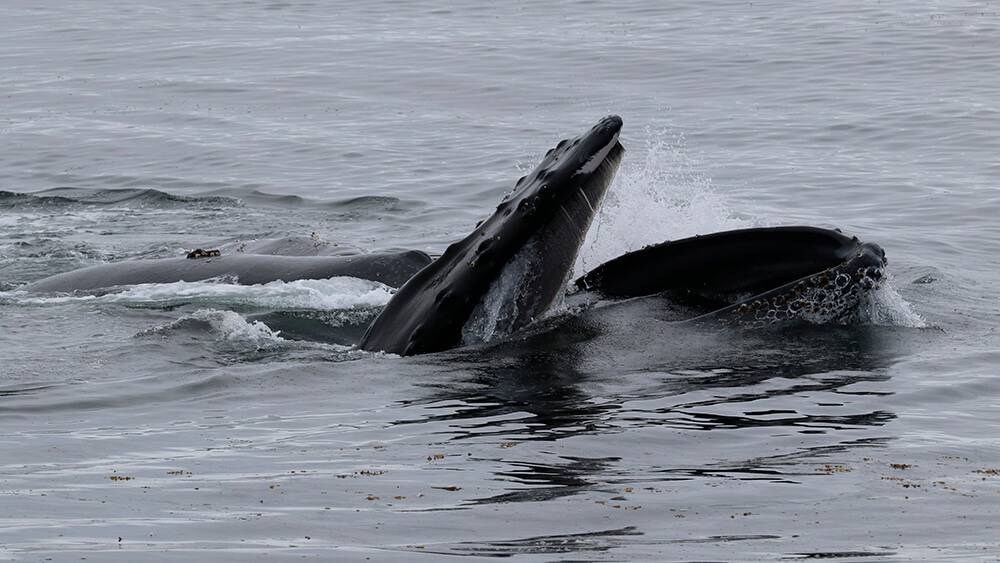
Three of the 14 humpback populations are common in Olympic Coast National Marine Sanctuary, with approximately 69% of whales from the Hawaiian DPS, 25% of whales from the Mexico DPS, and 6% of whales from the Central America DPS. However, the word “common” might be deceiving as humpbacks from the Mexico DPS are threatened, and humpbacks from the Central America DPS are endangered. The Hawaiian humpbacks have a much larger population size, which is why we see relatively more of those humpbacks feeding off Washington. The gentle giants migrate thousands of miles from their tropical breeding grounds to feast on the abundance of krill and small schooling fish that the sanctuary ecosystems support in the spring and summer months. It’s spectacular to see large groups of these humpbacks congregating at the surface, gaping mouths full of food. Under the surface, they are using a repertoire of vocalizations, or calls, while feeding. At times, it’s akin to a bustling mall food court, with several whales calling at the same time.
To better understand why humpback whales produce these calls, we categorize the sounds we record into two different groups: songs and calls (non-song sounds). It’s believed that song is produced only by male humpback whales and likely plays an important role in reproduction. Adult male humpbacks will sing in sessions ranging from five minutes to over 24 hours, with a predictable repetition of the sounds that make up the song. Non-song calls include a wide range of call types that have been associated with feeding or social behaviors. These calls are produced in short bursts, often with more than one whale producing different calls at the same time, and are thought to be used to coordinate feeding efforts or to communicate socially.
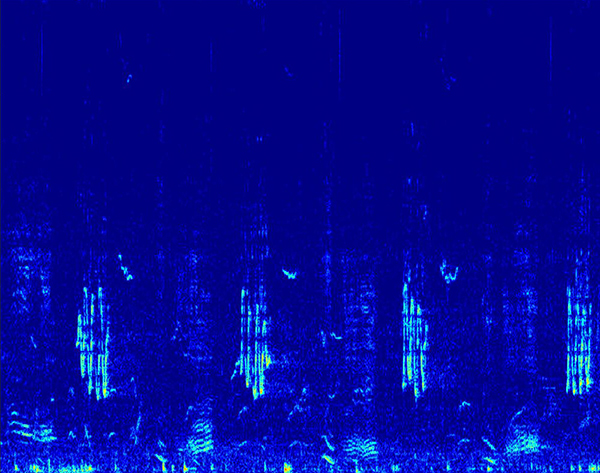
Humpback whale song has a repeated, structured pattern and is related to reproductive success. This song was recorded off Cape Elizabeth in the Olympic Coast National Marine Sanctuary by SanctSound in November 2019.
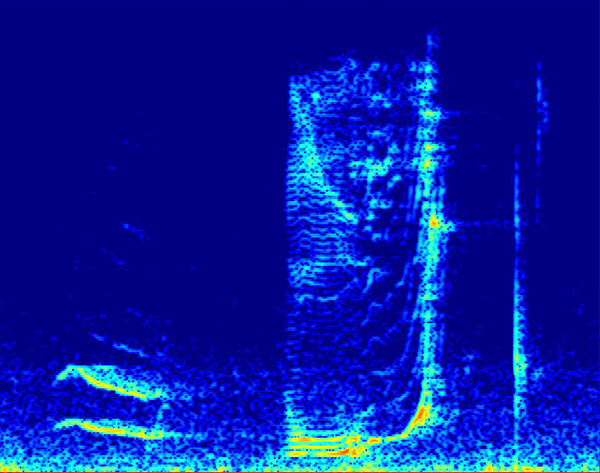
Humpback whales make sporadic social calls to communicate with each other and to aid feeding. These calls were recorded by SanctSound just outside of the Strait of Juan de Fuca in the shipping lanes in September of 2019
Listening for Humpbacks in Different Parts of the Sanctuary
Since 2018, NOAA and the Navy have been collaborating with over 20 partners to monitor sound in sanctuaries. The project has maintained four stations within Olympic Coast National Marine Sanctuary, and 2019 and 2020 records revealed that humpbacks can be heard across the entire sanctuary year-round. Notably, they consistently sing between October and February, more often during nighttime hours. This suggests that these months are important for reproductive success, even though actual mating probably doesn’t occur until these whales reach their respective breeding grounds. Song is occasionally heard in the sanctuary after the breeding season in March, April, and even May, indicating we still have much to learn about the role of song in the lives of these whales. Around May and June, we see a shift in the type of call that is present, as non-song calls become more dominant while whales feed. These social and feeding calls continue throughout the summer months into the early fall, often occurring in concentrated bursts of activity, with multiple whales calling over each other until they all fall silent or move outside the range of the hydrophone.
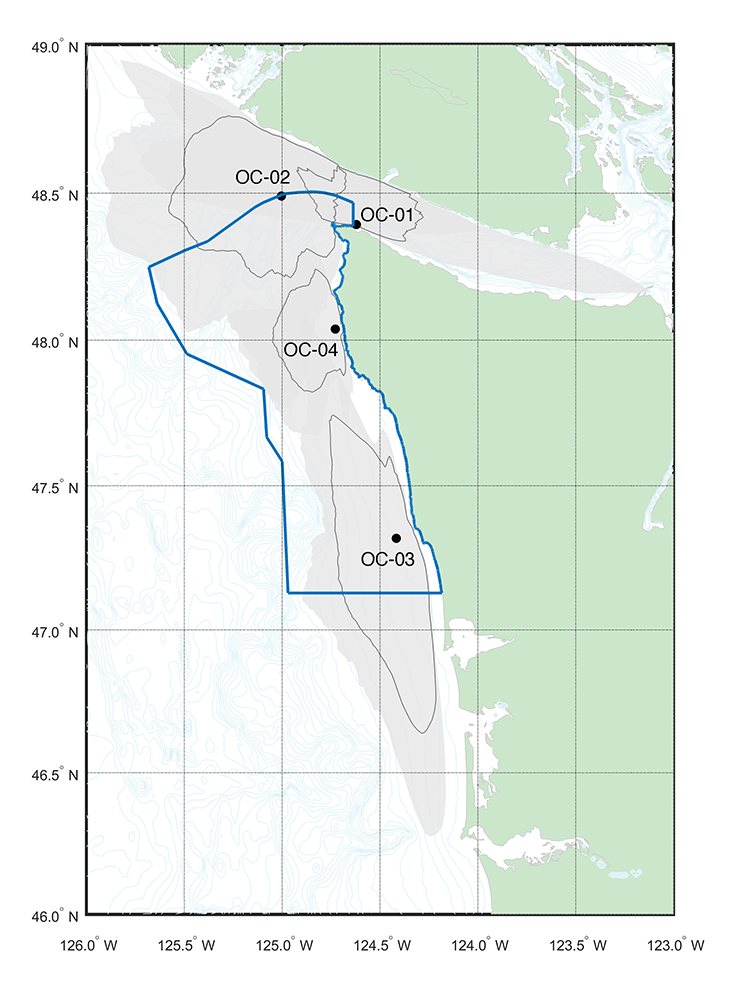
Monitoring Sound Supports Ecosystem-Based Conservation
Passive acoustic monitoring can support marine species management by providing an efficient, non-invasive way to collect year-round presence data for species like humpbacks that vocalize. Further, analysis of archival data can describe seasonal behavior patterns, as well as how the species overlaps with other activities like vessel traffic or harmful algal blooms. Analyzing this data over long time periods allows researchers to recognize the difference between natural variability in species presence or behavior, or when variability has been induced by a specific event or series of events. Underwater recordings of humpbacks in Olympic Coast National Marine Sanctuary show that the entire region is utilized for humpback feeding and communication between individuals. For example, recordings from the “OC-03” listening station off Cape Elizabeth confirms that there is just as much humpback whale song in the southern part of the sanctuary as in the northern areas. By using passive acoustic technology to monitor this rich soundscape, the sanctuary provides added protection and an opportunity for scientists to study this biodiversity hotspot.
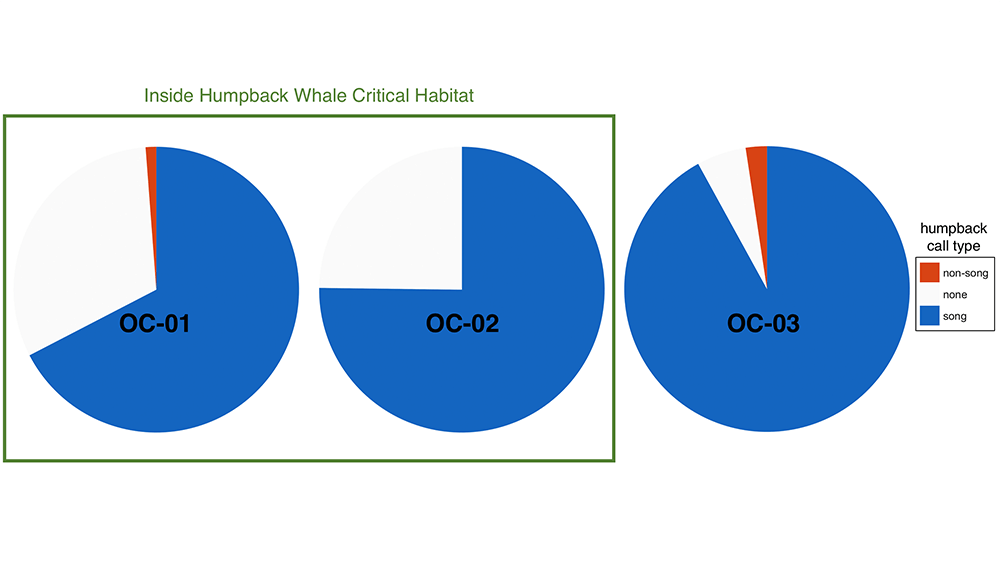
One way that NOAA protects endangered or threatened marine species is by designating their critical habitat, which in turn requires federal agencies to consult with NOAA Fisheries to safeguard those critical habitat designations. This process recently played out for humpback whales, and the critical habitat designation in the Pacific Northwest shined light on why and how humpbacks need added protection in Olympic Coast National Marine Sanctuary.
The Pacific Northwest has long been an important training and testing ground for the U.S. Navy, and some of their activities occur in and around Olympic Coast National Marine Sanctuary, which was established in 1994. The Naval Quinault Range Site overlaps a considerable portion of the sanctuary. At the request of the Navy, the original proposal for critical habitat designations for the Mexico (threatened) and Central America (endangered) humpback whale populations included exclusions of the Quinault Range Site, as well as a 10 km buffer around the range. During the designation process, the Navy and NOAA thoroughly discussed and exchanged information about the relative conservation value of this area and the impacts to national security that could result from the designation of critical habitat overlapping the QRS and the buffer area. NOAA concluded that the Navy provided reasonably specific justification to support the requested exclusion, with a slight modification to the boundaries of the buffer area. Specifically, in the final designation, NOAA did not exclude a portion of the 10 km buffer area extending from the northeast corner of the QRS where it overlaps with the OCNMS because the benefits of designating critical habitat within this portion of the buffer are not outweighed by national security impacts of that portion at this time. The result was a 4% reduction in area excluded from critical habitat, due to a smaller buffer north of the Naval Quinault Range Site—from a proposed exclusion of about 1,522 nmi2 to a final 1,461 nmi2.
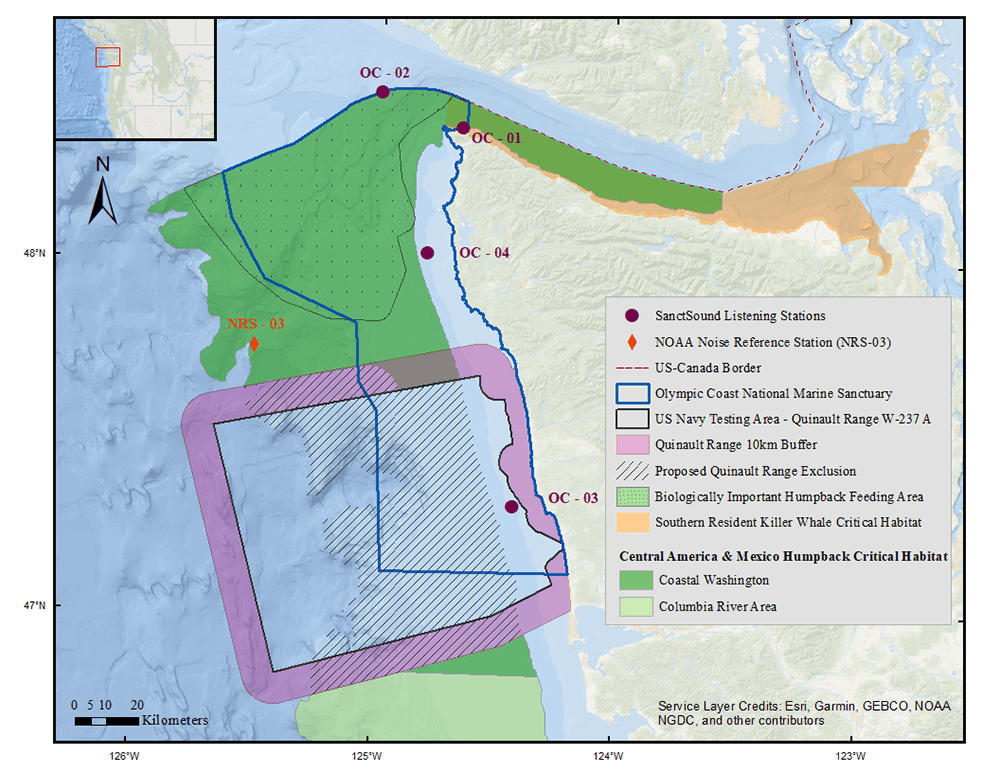
Sanctuaries Provide Haven for Humpbacks
Marine spatial management in high-use areas is challenging. Authorities work together to find common ground solutions that preserve species, cultural heritage, ecosystem services, national security, livelihoods, and coastal economies in parallel. That’s a tall order! National marine sanctuaries provide an essential layer of protection for special places, species, and heritage. In particular, national marine sanctuaries serve as havens for humpback whales, as many sanctuaries overlap with their important feeding and breeding grounds. Olympic Coast National Marine Sanctuary is dedicated to monitoring underwater sounds in the region to ensure long-term passive acoustic data is available to support decision making, and to detect any changes to the status of humpback populations that might indicate stronger protection is needed.
Lindsey Peavey Reeves, PhD, is the West Coast region Sanctuary Soundscape Monitoring Project coordinator at NOAA’s Office of National Marine Sanctuaries.
This story represents a humpback whale study that was led by Jack Barkowski, a SanctSound analyst and graduate student at Moss Landing Marine Laboratories. Propagation models were generated by Dr. Tetyana Margolina, SanctSound analyst and Associate Faculty at the Naval Postgraduate School.

